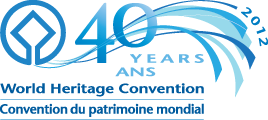[First posted in AWOL 30 November 2010. Updated 28 March 2013]
The Digital Library of Inscriptions and Calligraphies
Modern technology in general, digital in particular, have
added new dimensions as well as more sophisticated vocational
requirements to the field of Library and Information Science, from which
researches and knowledge lovers benefit. Amidst this tremendous
quantity of forms of the technological revolution, it was natural for
the Bibliotheca Alexandrina to adopt the concept of digital publication
in order to make it available to researchers interested in science and
knowledge. This, in turn, is what propels the Calligraphy Center to
provide the study of inscriptions, calligraphy, and writings of the
world across the ages from the prehistoric age until now with a new
approach and vision. From this premise, the idea of the Digital Library
of Inscriptions and Calligraphies was generated.
This project comes at the head of the Center of the Studies of Writings
and Calligraphy’s objectives, which has taken upon itself the
publication of different inscriptions and writings; in particular,
inscriptions in different languages and writings from Egypt and abroad,
which the center has made available to scientists, researchers, and
amateurs in a simplified digital content through the website.
The project of the Digital Library of Inscriptions and Calligraphies is
considered a digital record for writings carved on buildings and
archaeological remains across the ages. These inscriptions are presented
to the user in a digital form, including a synopsis of the
inscription’s data, photos, and a record of the writing’s it bears .
The project has been adopted in the present time
to record a group of languages in numerous scripts, including Ancient
Egyptian, Arabic, Persian, Turkish, and Greek; developing the
inscriptions of each script separately, and recording a new group of
other languages’ scripts. The basic data and detailed descriptions of
these inscriptions are displayed in two languages: Arabic and English.
Project organizers were keen to build a
flexible, user-friendly website for the Digital Library of Inscriptions
and Calligraphies in order to enable a large number of researchers to
benefit from the gems of archaeological written inscriptions and further
browse the images and references of each inscription separately. The
inscriptions can be easily browsed by language, or the classification of
the inscription; architecture, arts, or sculpture as well as the type
of the archaeological remain. It is possible to find a specific
inscription using the advanced search feature which allows the user to
search by the artifact’s number, place of preservation, or place of
discovery, and also by the period of time to which the written
inscription belongs. At this moment, the researcher will find all the
information related to the archaeological remain accompanied with
high-quality images, analysis of the written inscription, information
and a descriptive synopsis of the remain as well as a translation of the
inscription.
The Calligraphy Center aspires to make the
Digital Library of Inscriptions one of the most important digital
libraries specializing in the field of inscriptions and writings on the
internet.
And see also the full list of Digital Projects of the Bibliotheca Alexandrina.
















